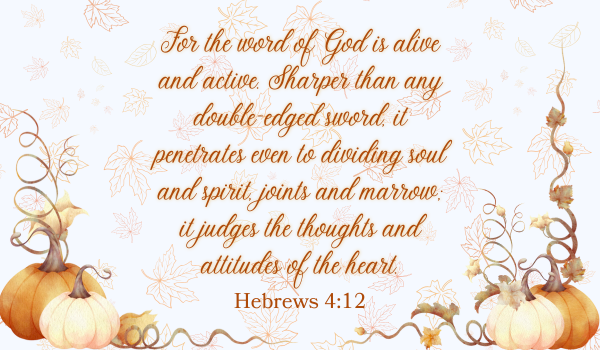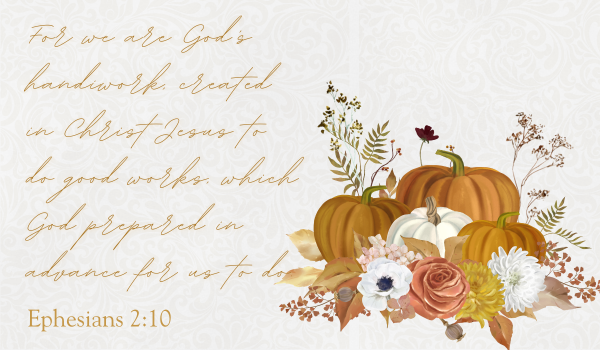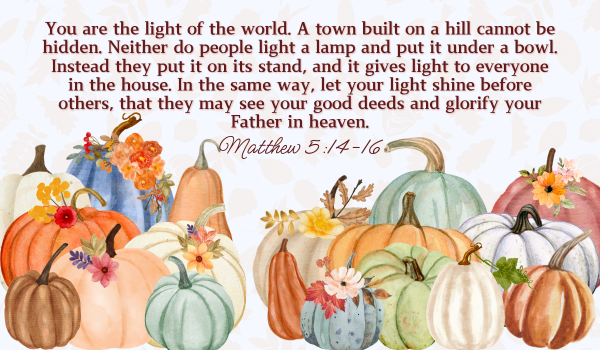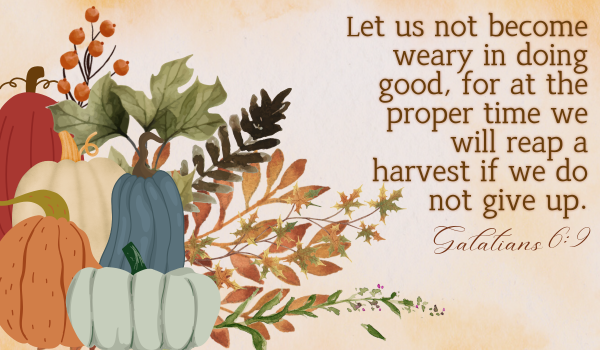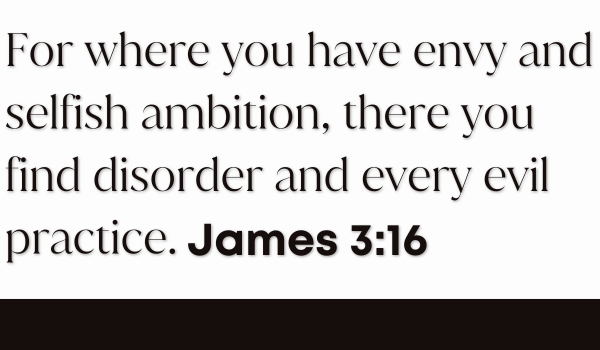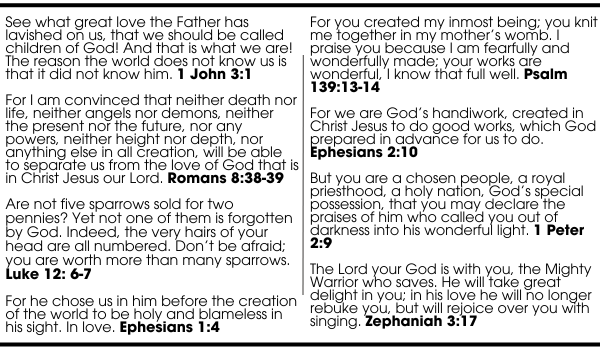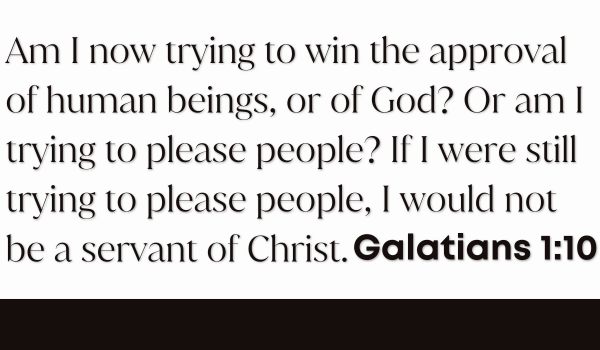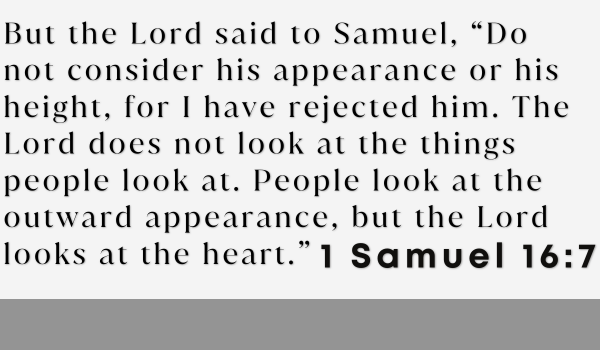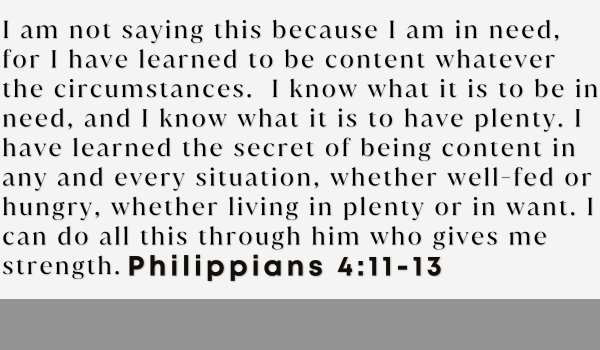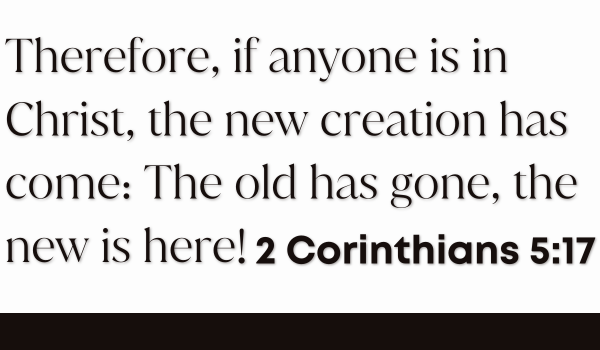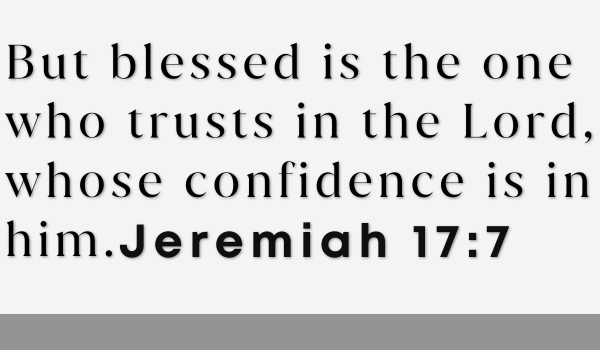Halloween Haunted House: A Walk Through Scripture’s Shadows
 When we think of haunted houses, our minds often drift to ghosts, ghouls, and jump scares meant to spook. But this Halloween, we've designed an experience like nothing else—an encounter with the mysterious and powerful stories of the Bible that carry their own weight of awe and wonder. Welcome to A Walk Through Scripture’s Shadows, a Bible-themed haunted house that brings the eerie, miraculous, and supernatural elements of the Bible to life in a way you’ve never imagined. This isn’t your typical haunted house—this is a journey through sacred stories that will leave visitors contemplating the mysteries of faith, life, and eternity long after they’ve left.
When we think of haunted houses, our minds often drift to ghosts, ghouls, and jump scares meant to spook. But this Halloween, we've designed an experience like nothing else—an encounter with the mysterious and powerful stories of the Bible that carry their own weight of awe and wonder. Welcome to A Walk Through Scripture’s Shadows, a Bible-themed haunted house that brings the eerie, miraculous, and supernatural elements of the Bible to life in a way you’ve never imagined. This isn’t your typical haunted house—this is a journey through sacred stories that will leave visitors contemplating the mysteries of faith, life, and eternity long after they’ve left.
Take an Imaginative Walkthrough…If You Dare
Each scene draws from the Bible’s most mysterious and powerful moments, creating an immersive experience that will thrill and inspire. From the eerie plague of darkness in Egypt to the chilling vision of dry bones rising in the valley, you’ll journey through haunting stories of fear and faith.
Scene 1: The Plague of Darkness
Exodus 10:21-23: Then the Lord said to Moses, “Stretch out your hand toward the sky so that darkness spreads over Egypt—darkness that can be felt.” So Moses stretched out his hand toward the sky, and total darkness covered all Egypt for three days. No one could see anyone else or move about for three days. Yet all the Israelites had light in the places where they lived.
Setting: A dark room with only faint, flickering lights. The air is heavy and still, and participants are plunged into near-complete darkness.
As visitors enter, they hear faint whispering voices and the sound of winds howling. The room seems suffocating, and the floor feels unstable as if the ground itself is shifting beneath them. The walls are covered in black cloth, and participants may stumble upon objects they can’t see, heightening the sense of unease.
Props: Dark fabrics, fans for unsettling wind effects, and hidden speakers playing whispers.
Scene 2: The Valley of Dry Bones
Ezekiel 37:7-10: And as I was prophesying, there was a noise, a rattling sound, and the bones came together, bone to bone. I looked, and tendons and flesh appeared on them and skin covered them, but there was no breath in them. Then he said to me, “Prophesy to the breath; prophesy, son of man, and say to it, ‘This is what the Sovereign Lord says: Come, breath, from the four winds and breathe into these slain, that they may live.’” So I prophesied as he commanded me, and breath entered them; they came to life and stood up on their feet—a vast army.
Setting: A dimly lit, barren landscape filled with skeletons. Dry, cracked earth stretches out before visitors, with piles of bones scattered across the room.
As they walk through the valley, a strange rattling sound fills the air—bones shifting and moving on their own. In the distance, a low, eerie moaning can be heard. Occasionally, a skeleton seems to twitch or move, adding to the sense of dread. Shadows loom large on the walls, as though the bones themselves are trying to rise.
Props: Skeletons, bone props, dim lighting, and hidden animatronics to create subtle movements.
Scene 3: The Writing on the Wall
Daniel 5:4-5: As they drank the wine, they praised the gods of gold and silver, of bronze, iron, wood and stone. Suddenly the fingers of a human hand appeared and wrote on the plaster of the wall, near the lampstand in the royal palace. The king watched the hand as it wrote.
Setting: A grand but empty banquet hall. The table is set for a feast, but all the food is spoiled or rotten. The room is illuminated by flickering candles, casting long shadows.
As visitors move through the room, the faint outline of a hand suddenly appears on the far wall. Without warning, cryptic letters begin to glow on the wall, spelling out an ominous message. A cold draft fills the room, and the sound of disembodied whispers grows louder.
Props: Glow-in-the-dark or invisible ink writing, holographic hand projection, and eerie sound effects of whispers and wind.
Scene 4: The Demon-Possessed Pigs
Mark 5:11-13: A large herd of pigs was feeding on the nearby hillside. The demons begged Jesus, “Send us among the pigs; allow us to go into them.” He gave them permission, and the impure spirits came out and went into the pigs. The herd, about two thousand in number, rushed down the steep bank into the lake and were drowned.
Setting: A dark, swampy area near a "sea" (a pool of water or large basin). The ground is soggy, and mist rises from the water, obscuring visibility.
Visitors hear the wild squeals of pigs in the distance, their panic growing louder as they approach. Suddenly, a herd of demonic pigs rushes past them (actors or animatronics), running toward the water. As they plunge into the sea, a splash is heard, and eerie silence follows. Strange lights glow under the water, and the air feels charged with dark energy.
Props: Mist machines, pig sound effects, kiddie pool with light effects, and animatronic or costumed pigs.
Scene 5: Lazarus’ Tomb
John 11:43-44: When he had said this, Jesus called in a loud voice, “Lazarus, come out!” The dead man came out, his hands and feet wrapped with strips of linen, and a cloth around his face. Jesus said to them, “Take off the grave clothes and let him go.”
Setting: A cold, stone tomb with large boulders and faint light coming through cracks in the walls. The air is damp and musty.
Visitors walk through a narrow passage and suddenly come face to face with a large stone blocking their path. Slowly, the stone begins to roll away on its own. Inside the tomb, they see the figure of a man wrapped in burial cloths—Lazarus—sitting up. His eyes open slowly, and he begins to rise.
Props: A moving "stone" door, an actor or mannequin dressed as Lazarus, dim lighting, and atmospheric sound effects of groaning and shifting rock.
Scene 6: The Passover Angel of Death
Exodus 12:23: When the Lord goes through the land to strike down the Egyptians, he will see the blood on the top and sides of the doorframe and will pass over that doorway, and he will not permit the destroyer to enter your houses and strike you down.
Setting: A street of doorways, each marked with red "blood" above the lintels. The space is dimly lit, with fog drifting across the ground.
As visitors walk past the doorways, they feel the cold brush of something unseen moving past them. A ghostly wail fills the air, and a shadowy figure moves silently through the scene, stopping at certain doors and passing by others. The feeling of dread grows as the figure approaches. At the end of the scene, a door opens, revealing a candlelit room of safety.
Props: Doorways marked with red paint, fog machines, shadowy projections, eerie sound effects, and a glowing room at the end of the scene.
Scene 7: The Witch of Endor
1 Samuel 28:11-14: Then the woman asked, “Whom shall I bring up for you?” “Bring up Samuel,” he said. When the woman saw Samuel, she cried out at the top of her voice and said to Saul, “Why have you deceived me? You are Saul!” The king said to her, “Don’t be afraid. What do you see?” The woman said, “I see a ghostly figure coming up out of the earth.” “What does he look like?” he asked. “An old man wearing a robe is coming up,” she said. Then Saul knew it was Samuel, and he bowed down and prostrated himself with his face to the ground.
Setting: A dark, cave-like room, filled with ancient scrolls, flickering candles, and mystical symbols on the walls. A fire crackles in the center of the room.
Visitors enter to find an old, cloaked figure standing in front of the fire, muttering in an ancient language. As they watch, a spectral figure begins to rise from the shadows of the cave—summoned from the dead. The room grows colder, and the ghostly figure seems to fix its gaze directly on the visitors, before vanishing into the darkness. The witch slowly turns toward the visitors, eyes glowing unnaturally bright.
Props: A cloaked actor playing the witch, a ghostly figure created with projections or fog effects, mystical symbols, and dim lighting.
Scene 8: Daniel in the Lions’ Den
Daniel 6:16-17: So the king gave the order, and they brought Daniel and threw him into the lions’ den. The king said to Daniel, “May your God, whom you serve continually, rescue you!” A stone was brought and placed over the mouth of the den, and the king sealed it with his own signet ring and with the rings of his nobles so that Daniel’s situation might not be changed.
Daniel 6:24: At the king’s command, the men who had falsely accused Daniel were brought in and thrown into the lions’ den, along with their wives and children. And before they reached the floor of the den, the lions overpowered them and crushed all their bones.
Setting: A cave-like den with low ceilings and dim lighting. The sound of growling lions echoes through the space.
Visitors enter a cramped, rocky space and feel the weight of being watched. Suddenly, lion eyes glow from the shadows, and deep growls reverberate through the cave. As they move deeper into the den, the sound of claws scraping against the stone intensifies. But just before the lions can pounce, an angelic figure appears, casting a protective light that pushes the lions back into the shadows.
Props: Glowing lion eyes, growling sound effects, a hidden actor or animatronic lion, and a glowing "angel" figure.
Scene 9: The Garden of Gethsemane
Luke 22:44: And being in anguish, he prayed more earnestly, and his sweat was like drops of blood falling to the ground.
Setting: A garden filled with twisted trees and long shadows. A soft light falls over a central figure kneeling in prayer, his form silhouetted against the darkness.
As visitors approach, they see the figure of Jesus, deep in prayer, his face marked with blood-like sweat. The atmosphere is thick with tension, and a sense of betrayal hangs in the air. Suddenly, the rustle of footsteps is heard, and shadowy figures move in the distance, surrounding the garden. The feeling of encroaching darkness grows stronger as if something terrible is about to happen.
Props: Actor or mannequin as Jesus, dim garden-like lighting, fog machines, and shadowy figures created with projections or actors.
Scene 10: From Darkness to Light
John 1:5: The light shines in the darkness, and the darkness has not overcome it.
John 8:12: When Jesus spoke again to the people, he said, “I am the light of the world. Whoever follows me will never walk in darkness, but will have the light of life.”
Setting: A long, narrow corridor shrouded in darkness. The floor is uneven, and the air is heavy. As visitors make their way through the passage, the dim light barely illuminates their path, creating a sense of uncertainty and isolation.
The corridor grows darker and more oppressive as visitors move forward. The walls seem to close in, and the sound of distant, echoing footsteps adds to the eerie feeling. Suddenly, the ground begins to shake, and a rumbling sound builds. At the climax of the darkness, a bright light bursts forth at the end of the corridor, flooding the space. The shadows are banished in an instant, revealing a radiant, open area filled with soft, warm light. In the center stands a cross, glowing with an ethereal light, symbolizing the ultimate triumph of Christ over darkness. The once-ominous sounds are replaced by angelic music, and the sense of fear transforms into peace and hope.
Props: A dark corridor with fog machines, rumbling floor effects, hidden speakers for atmospheric sounds, and a glowing cross bathed in soft light. Use backlit panels or LED lights to create a dramatic shift from darkness to light.
Organizing the Haunted House
This haunted house isn’t just an exciting Halloween experience—it’s a powerful tool for youth groups, families, and church communities to engage with Scripture in a fresh, memorable way. For youth groups, it offers a thrilling opportunity to explore the mysterious and awe-inspiring stories of the Bible, showing that faith can confront fear and darkness head-on. Families can walk through together, experiencing the journey from fear to hope, while sparking conversations about God’s power over the challenges we face in life.
Organizing the haunted house requires careful planning to ensure it is both spiritually enriching and appropriately spooky. Start by selecting a location—whether it’s a church basement, fellowship hall, or an outdoor area—where you can create the necessary atmosphere. Each scene needs to be crafted with attention to lighting, sound effects, and props, ensuring that the haunting visuals stay true to biblical stories while maintaining a family-friendly experience.
Recruit volunteers from the church community to act as characters, help with set design, and run sound and lighting for each scene. For youth groups, this can be an excellent opportunity to get them involved in production roles or acting as the figures from Scripture. Be sure to have someone assigned to manage safety, ensuring that pathways are clear and that there are no hazards in the dark areas.
You can organize groups to walk through in staggered intervals, allowing each family or youth group to move at their own pace and fully experience each biblical moment. Consider setting up a “debrief” area at the end, where families and participants can gather for refreshments and reflect on the spiritual lessons of the journey from darkness to light. Adding a brief devotional or discussion at the end of the walkthrough can help reinforce the message of God’s victory over fear and evil, making it more than just an entertaining event, but also a spiritually formative one.
The Light that Conquers All
As they make their way through the shadows of A Walk Through Scripture’s Shadows, visitors will witness the eerie and mysterious moments that echo through the pages of the Bible—darkness, death, and uncertainty. But as they leave, they’ll carry with them the truth that in every dark valley, His light is near, ready to guide us through.
This haunted house isn’t just about spooks and scares; it is about encountering the deeper spiritual battles we all face. It reminds us that while we may walk through shadows, we are never alone. God’s light pierces through every fear and brings hope to even the most unsettling moments.
Happy Halloween!
-Torrance Community Church of Christ

